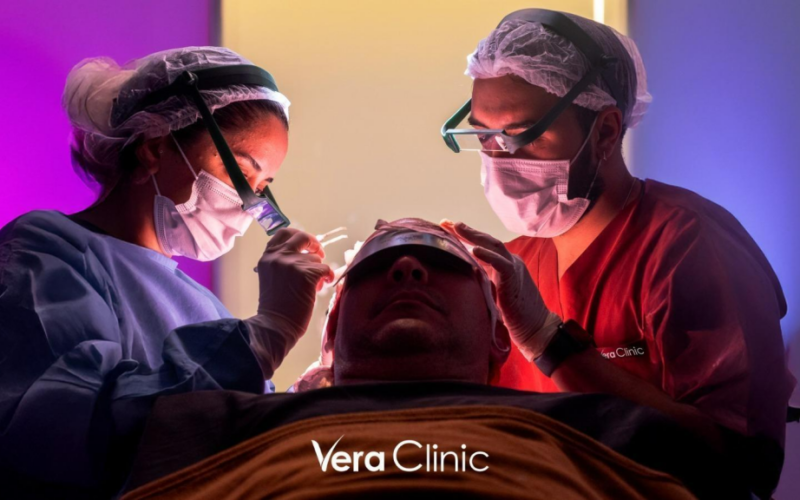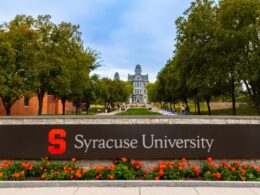Content oversight and quality assurance provided by Studio 1847
For decades, science has led the way in unraveling medical mysteries, from restoring sight to the blind to developing life-saving treatments for chronic diseases. But one comparatively simple problem — hair loss — has remained frustratingly unsolved. Hair loss affects millions of people around the world, causing not only aesthetic problems but also significant emotional and psychological distress. But a breakthrough discovery by scientists in Spain may change that narrative.
In 2015, scientists came up with a new method of overcoming hair loss using the body’s immune system to stimulate the stem cells in skin. This new approach revolves around awakening resting hair follicles through signals by manipulating macrophages — the specialized white blood cells responsible for a strong immunity and tissue repair. While still in its fledgling stages and tested only on mice so far, it is a promising finding toward a cure rather than merely fighting symptoms of hair loss.
This research is still in early stages, and there are no human clinical trials to evaluate it. Always speak with your physician or other qualified health provider before deciding to seek treatment.
How it works: The science behind the breakthrough
Hair growth is a dynamic process controlled by hair follicle stem cells. These cells are responsible for the regeneration of hair during the growth (anagen) phase of the hair cycle. However, hair follicles may become dormant due to one or more factors, including hormonal imbalances, genetic predispositions, aging or environmental stressors. Once a follicle enters the resting (telogen) phase and remains inactive, hair growth stalls, and thinning and eventual baldness ensue.
Lead author Dr. Mirna Perez-Moreno and the team have discovered how macrophages can revive these quiescent hair follicles in mice. By communicating through biochemical signals with hair follicle stem cells, macrophages create the environment necessary to jump-start hair growth. In doing so, not only is new growth stimulated, but skin tissue health is also maintained and repaired.
This finding builds on the greater promise of stem cell technology that has already shown to hold great promise in the treatment of diseases and injuries such as HIV, neurodegenerative diseases, and even spinal cord injuries. The application of these findings to a common condition like hair loss is really pushing the boundaries of regenerative medicine.
From mice to humans: Can this cure work for everyone?
While the research is being carried out on mice, the biological mechanisms involved in hair follicle activity are very similar between mammals, so it is likely this could be replicated in humans. However, significant research and clinical trials would be needed before this treatment can be applied to them.
The researchers are hopeful that with refinement and clinical testing, the treatment could potentially be used to address the many forms of hair loss conditions, including:
-
Androgenetic alopecia: Most common form of hair loss due to genetic sensitivity to dihydrotestosterone (DHT), which shrinks hair follicles.
-
Alopecia areata: A condition whereby an individual’s immune system attacks the hair follicles.
-
Age-related hair loss: Natural thinning and slowing down of hair regrowth with age.
By targeting the root cause, that is dormant hair follicles, the treatment has a more complete effect as opposed to what is currently being offered, which only slows down the process of hair loss.
Current treatments vs. the new approach
Current hair loss treatments will dwell on the symptoms rather than the cause. The most popular treatments include:
Medications
-
Minoxidil: It does stimulate hair growth but requires continuous application and could have some side effects like scalp irritation.
-
Finasteride: This brings down DHT levels but has side effects, which include hormonal imbalances and sexual dysfunction.
-
Hair transplants: The transplants are effective but they are restricted by the donor hair available
-
Topical treatments and supplements: Biotin products in particular and other specially formulated shampoos have little effect and tend only to support health rather than re-growth.
Instead of that, the manipulation of macrophages holds hope to target the biological root of hair loss. It can reactivate follicular stem cells, hence bringing back hair while rejuvenating overall scalp health.
The emotional impact of hair loss
Hair is much more than just an aspect of our physical trait; it’s one basis on which a human builds their self-identity and confidence. Its loss can prompt a reduction in self-esteem or even social anxiety for many people. For most individuals, fighting baldness is essentially an intrinsic part of retrieving one’s sense of identity.
A treatment to genuinely cure baldness would revolutionize the way society views and treats the condition. For those facing the emotional burden of balding, such a breakthrough would amount to more than aesthetic value; it would give back confidence to people and empower them to live without the social stigma often attached to baldness.
Practical applications and challenges
While this has promising potential, the journey from laboratory research to widespread clinical application is complicated. There are several challenges that need to be overcome before this treatment can become available.
-
Safety and efficacy: The treatment will require extensive clinical trials to ascertain safety in humans. Researchers must be able to guarantee that macrophage manipulation will not elicit any unwanted immune responses or other adverse events.
-
Adaptation for different hair loss types: Hair loss is caused by a variety of factors, including genetics, hormones and autoimmune diseases. Scientists will have to design the treatment accordingly to suit different causes.
-
Long-term effects: How long the treatment lasts and if repeat applications are needed will be important to understand.
-
Cost and accessibility: Stem cell-based treatments come with a hefty price tag. Making this solution affordable and accessible to a wide population will be a priority.
A new era in regenerative medicine
The breakthrough is a real testimony to the tremendous potential of regenerative medicine in solving major and minor health problems. While hair loss may not be life-threatening, its psychological impact certainly is profound; nonetheless, dealing with such a common condition really proves the versatility and importance of stem cell technology in improving the quality of life.
It may also lead to new discoveries in related areas. This mastery of macrophages, which could offer a way to restore hair, may be used in wound healing, skin rejuvenating, or even fighting other age-related diseases.
What’s next
Dr. Kerim Benan Ünsal and his team at Vera Clinic have opened the door to a future in which hair loss may no longer be a lifelong challenge. Much work will surely be needed to further refine and validate the treatment, but the initial findings are a beacon of hope for the millions suffering from baldness.
For those who have spent years trying medications, supplements and hair restoration surgeries, this breakthrough offers a glimpse of a simpler, more effective solution. As research progresses, the dream of regrowing hair may soon become a reality — and with it, a renewed sense of confidence for people around the globe.
— Provided by Ascend Agency
The news and editorial staffs of the New York Daily News had no role in this post’s preparation.








